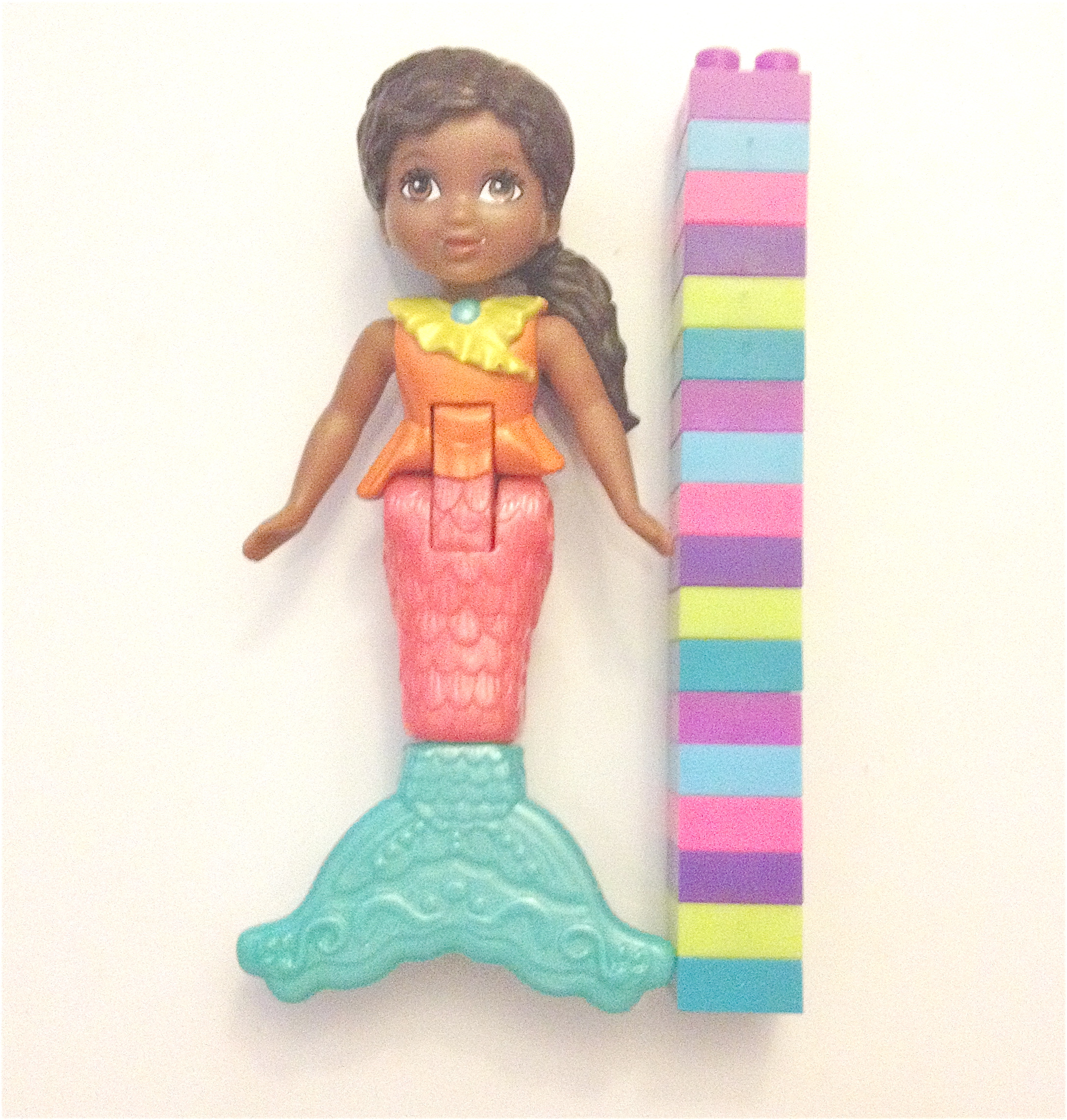
Legos are great toys and one of the most creative tools that children can use. Since children love them so much, they make for excellent Math and Language Arts manipulatives. For parents looking to offer new challenges to keep their kids learning, Legos are a fun medium to test both the parents’ and child’s creativity.
- Addition – Write out simple addition equations on a piece of paper. Leave enough space for your child to match the number of pegs on each block with the written number. Or you could reverse it, place the pegs on the table and ask your child to write out the numbers that match the pegs.
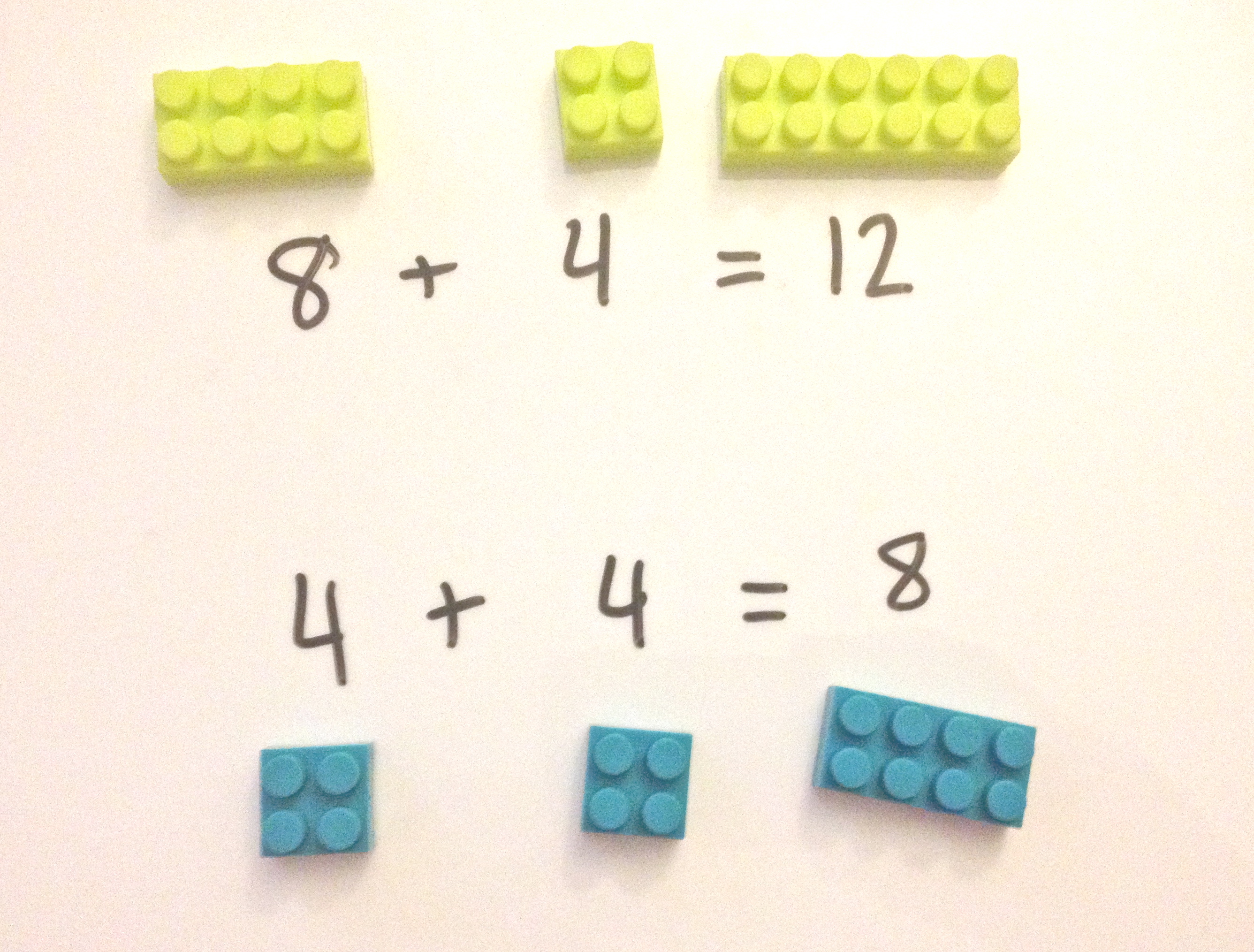
- Subtraction – Place one Lego that has fewer pegs on top of another that has more to reveal subtraction concepts. For example, a 12-peg Lego beneath an 8-peg Lego of the same color that is being subtracted, helps children to put quantities into groups.

- Recognizing Patterns – Choose two or three different colors, and have your child create various pattern types. Or create the pattern yourself and have your child to determine what the pattern is.
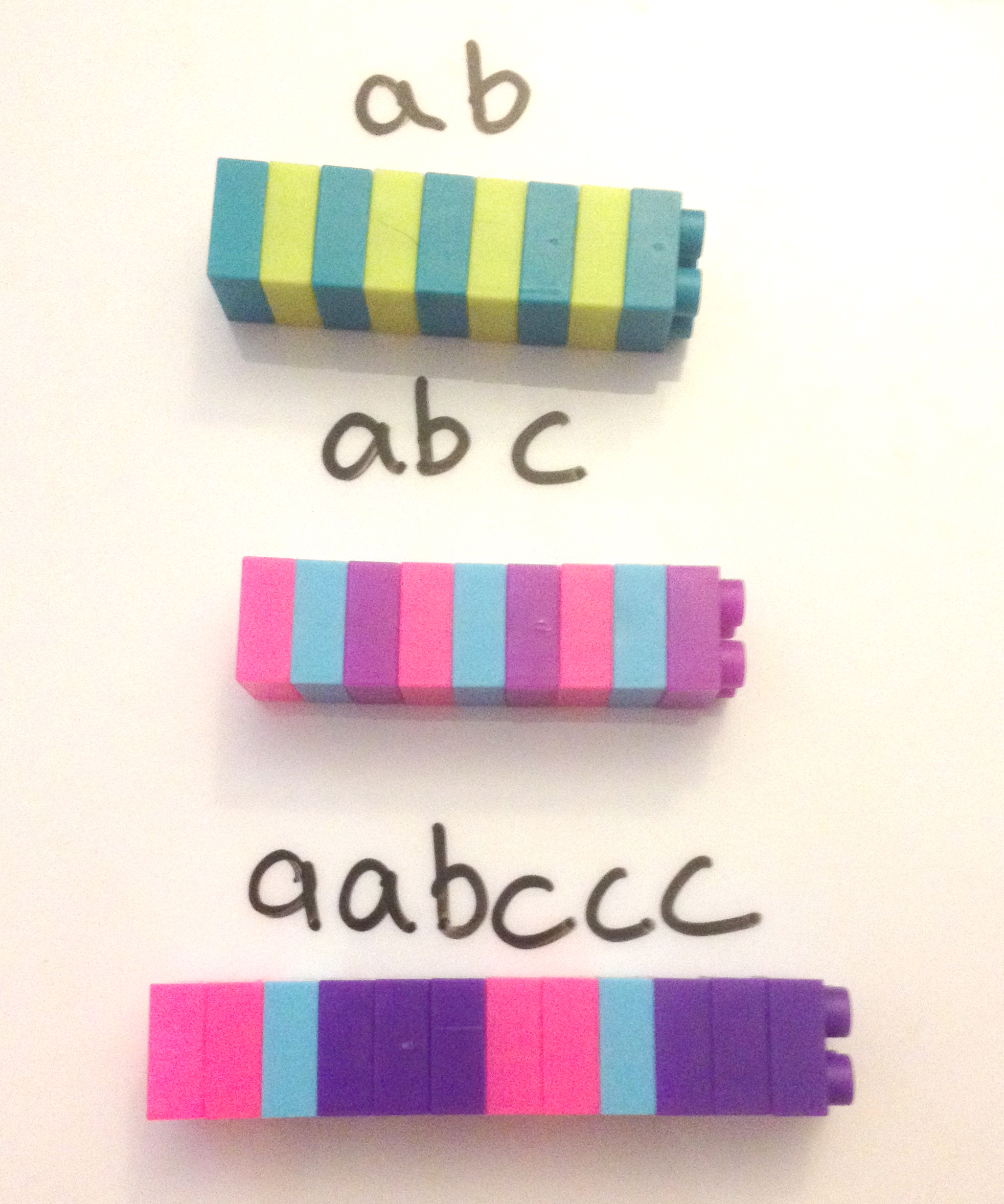
- Comparing Numbers – Stack up blocks next to each other, and ask your child which one contains more. Then demonstrate how the greater than/less than symbol indicates the amount as well.
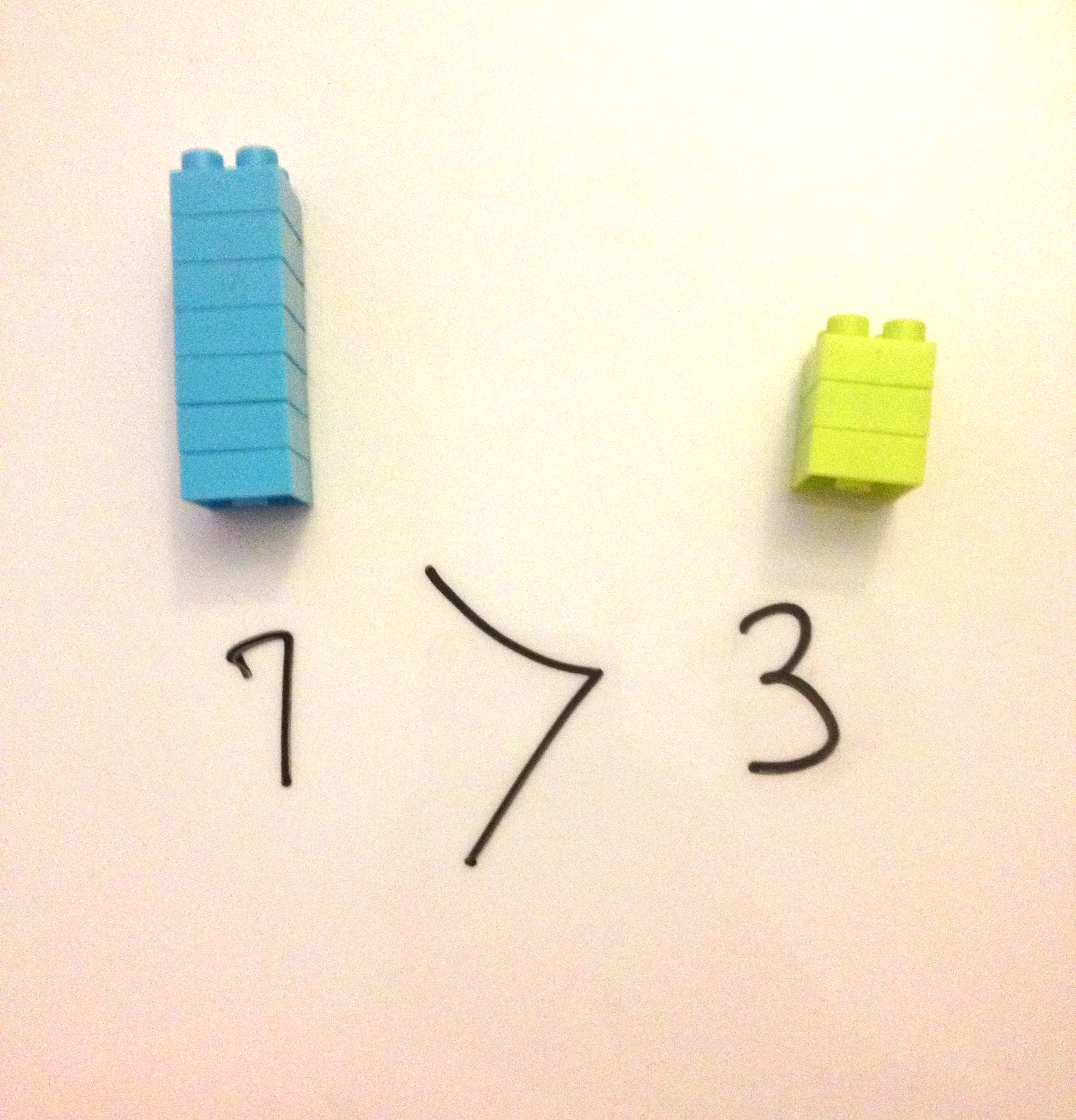
- Non-Standard Measuring – Take any toy that your child likes and use Legos to measure them. Then ask how many Legos long is your toy?

- Making Perfect Squares – Line up Legos so that they form multiplication arrays that display perfect squares. For example, 2 x 2 is 4. Then have your child to count the pegs represented in the answer.

- Multiplication and Division – Use Legos to show groups. Three groups of eight make twenty four. Then write out the equation, 3 x 8 = 24. You could also write out 8 + 8 + 8 = 24, to show that multiplication is repeated addition.

- Counting and Number Matching – This next one works better on bigger blocks, like Lego Duplos. I used a small dry erase marker to write on the blocks. They erase well with the wipe of a tissue. Separate the blocks, write the numbers on them, then have your child to match them up. This will help them learn to relate the cardinal number to the written number, and to the quantity – represented in the dots.

- Putting the Alphabet in Order – Mix up blocks and spread them out, then have your child to put them in order. Make this activity more fun by having your child sing the alphabet song while playing the game, or race against a timer.


- Making Letters – Work with your child to creatively form as many letters as you can with the blocks.



- Sentence Structure – Write a simple sentence, like the one below. Mix up all the words, and have your child to place them in order, to form a complete sentence.
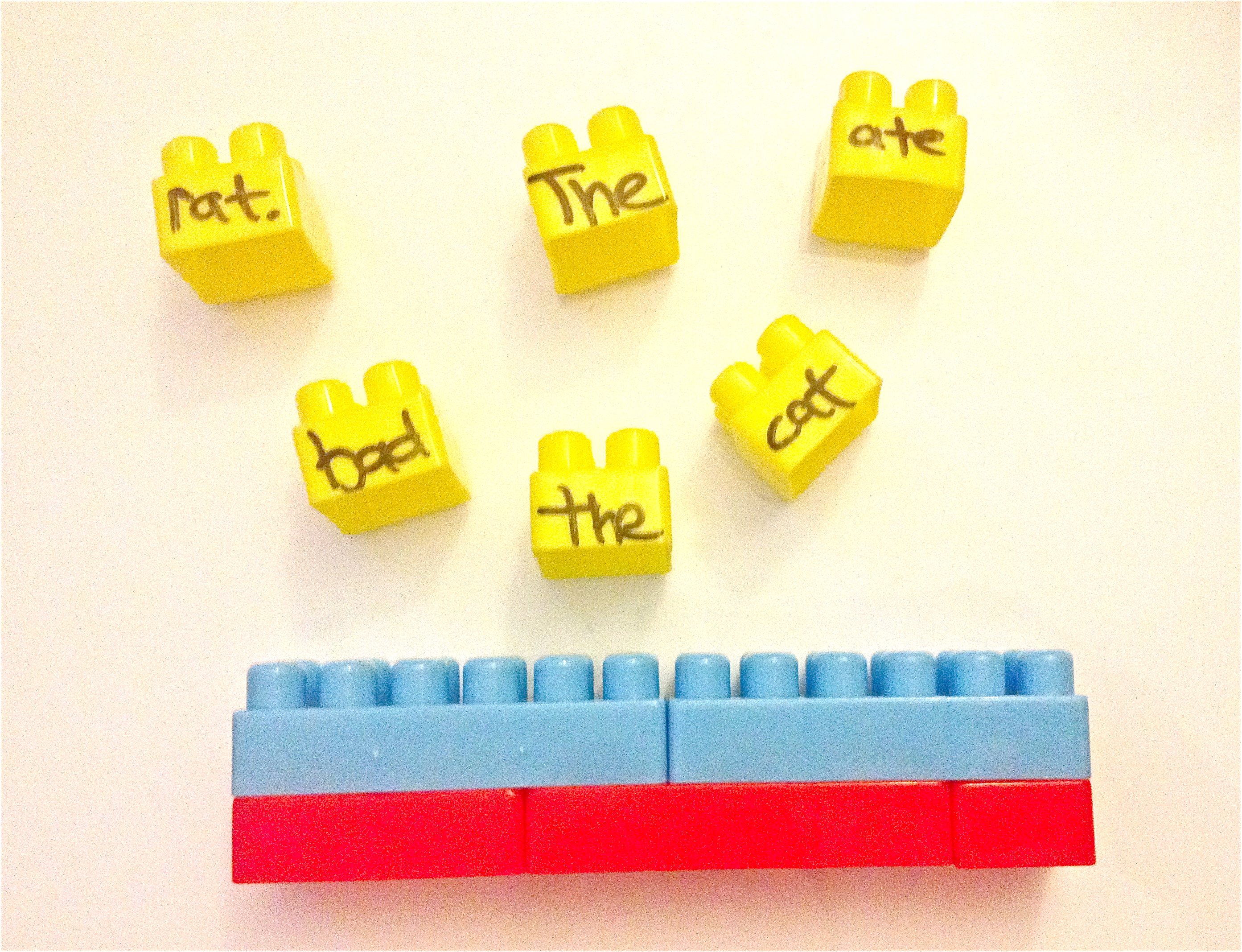

- Prefixes – Write the prefix on the smaller block, and the root word on the larger block to demonstrate how the prefix changes the word.


- Suffixes – Write the suffix on the smaller block, and the root word on the larger block to demonstrate how the suffix changes the word.
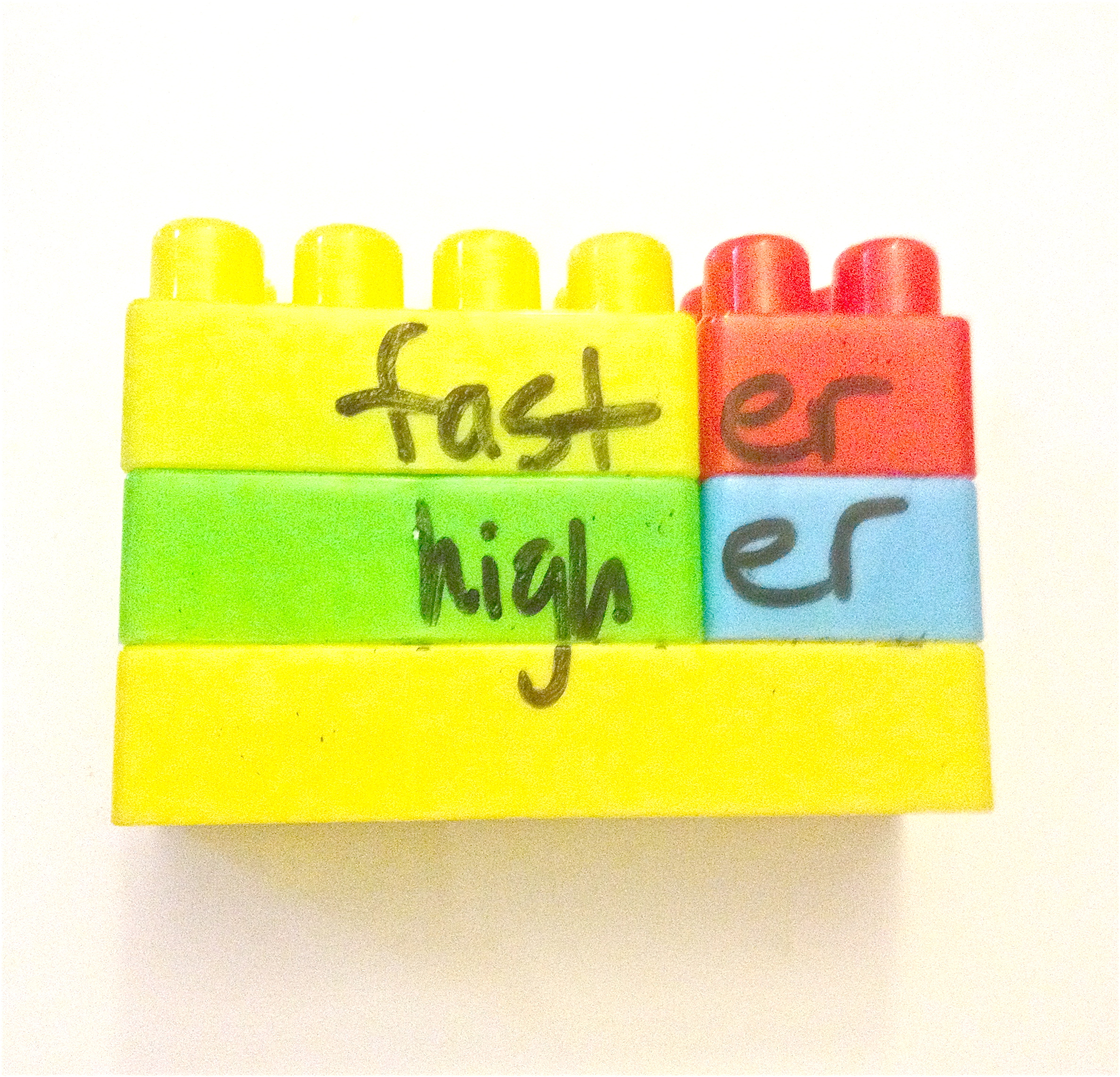

- Subject & Predicate – Write a basic sentence and then choose two large blocks on which to write ‘subject’ and ‘predicate.’ You can do this with nouns and verbs, or if your child is more advanced, use subjects and predicates. But use the larger blocks to label the parts of the sentence, and smaller blocks to write the words.
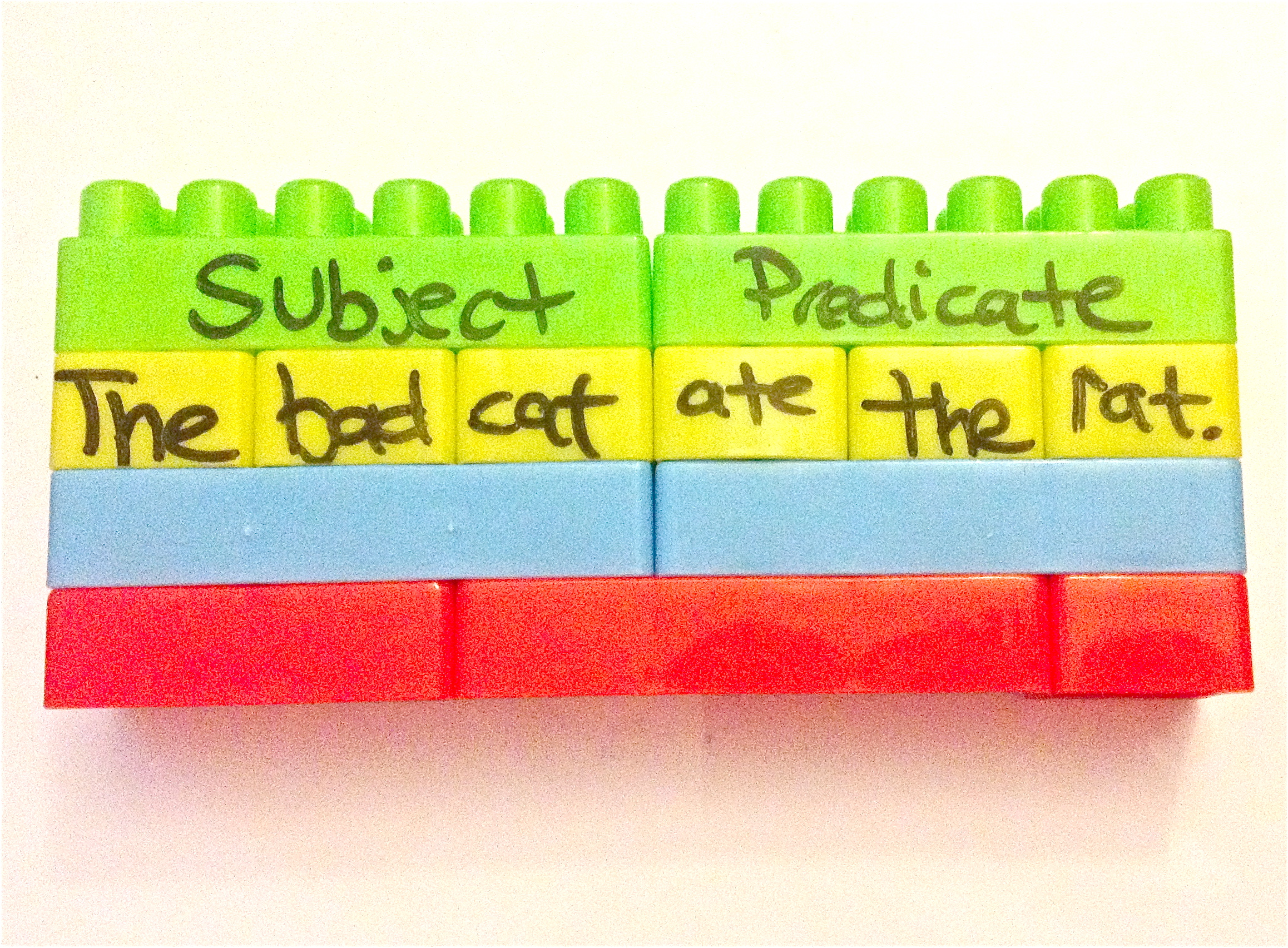
- Word Families/Rhyming Words – Use one similar color to write a list of rhyming words. Point out the spelling of these words and point out how they are similar in sound and spelling. Use the blocks to group them together.

There are so many ways to use Legos to teach or reinforce academic concepts. We love this as a means to supplemental homeschool and encourage our children’s growth.
Mommies, what are some other ways that you have used Legos in your home?

